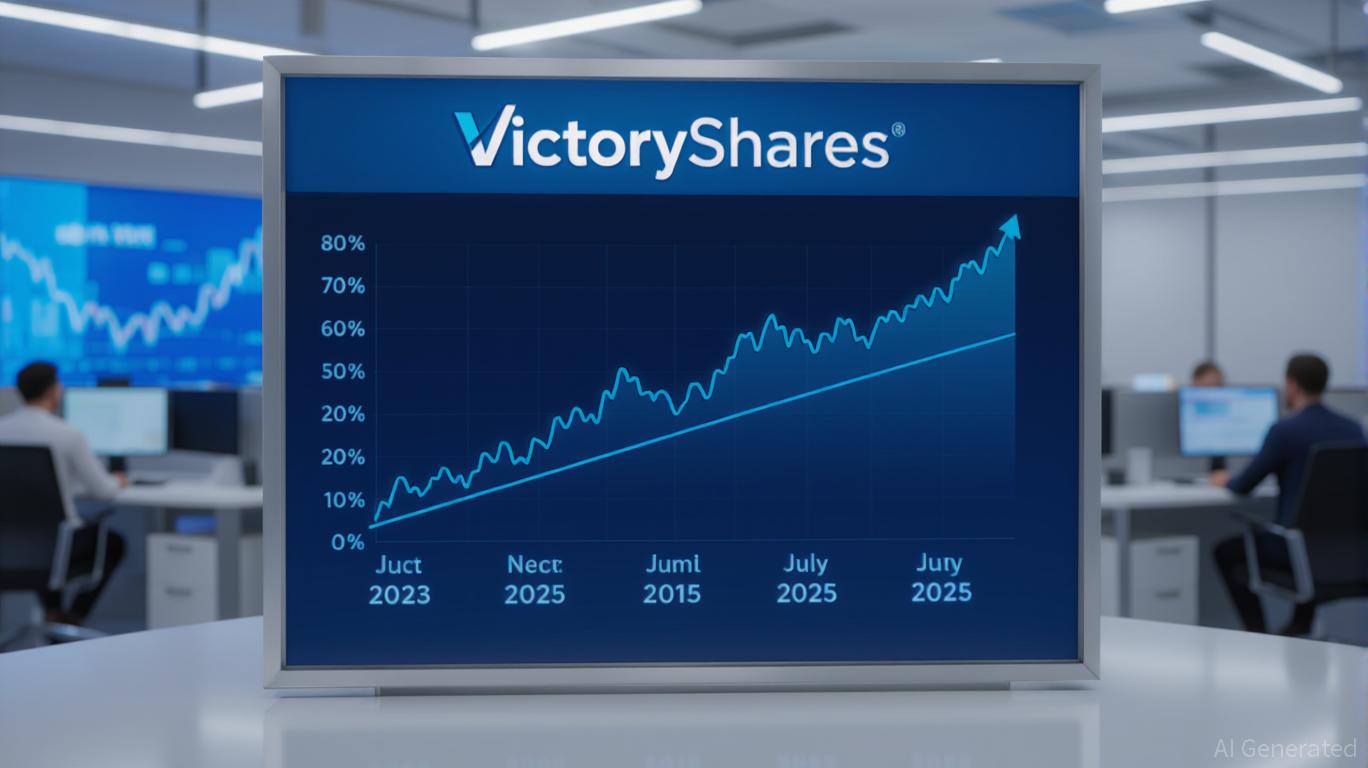Mastering Factor Investing with ULVM: Capturing Value and Momentum While Taming Volatility
The rise of factor-based ETFs has reshaped how investors approach equity markets, offering systematic exposure to strategies like value and momentum without requiring active management. Among these, the VictoryShares US Value Momentum ETF (ULVM) stands out as a disciplined tool for investors seeking to capitalize on factor premiums while minimizing unnecessary volatility. As its July 2025 dividend announcement underscores, ULVM's focus on large-cap U.S. equities, paired with low turnover and volatility controls, positions it as a compelling alternative to its small/mid-cap counterpart. Here's why it deserves a place in tactical portfolios.
The Advantage: Factor Focus with Volatility Discipline
ULVM tracks the Nasdaq Victory US Value Momentum Index, which selects large-cap U.S. equities exhibiting strong value characteristics (e.g., low price-to-book ratios) and momentum (e.g., rising prices). Unlike cap-weighted indices, it rebalances quarterly to lower turnover and overweight securities with historically lower volatility. This dual mandate creates a portfolio that balances growth potential with risk mitigation.
The July 2025 dividend of $0.1572 per share, payable on July 11, exemplifies ULVM's consistent income profile. With a trailing 12-month yield of 1.81%, it offers steady payouts while maintaining a 0.20% expense ratio—among the lowest in its category. This affordability, combined with its low volatility design, makes ULVM an attractive option for income-seeking investors.

Why Volatility Management Matters in Factor Strategies
Factor-based ETFs can face drawdowns when market conditions shift against their focus (e.g., value underperforming growth). ULVM's construction mitigates this risk through two key mechanisms:
1. Large-Cap Stability: Exposure to large, liquid companies reduces the sharp price swings common in smaller-cap stocks.
2. Volatility-Weighted Index: By emphasizing low-volatility stocks, the index inherently avoids overconcentration in high-beta sectors.
The data confirms this approach:
-
- ULVM's volatility of 2.97% is nearly 30% lower than its small/mid-cap sibling USVM's 4.09%.
- Its Ulcer Index (5.37%), which measures downside risk, is half that of USVM's 8.93%, signaling less painful drawdowns.
ULVM vs. USVM: Risk-Reward Tradeoffs
While ULVM's July dividend yield (1.81%) trails its small-cap counterpart USVM's 1.97%, the risk-adjusted return gap is stark:
- ULVM's Sharpe Ratio (0.76) is double USVM's 0.38, reflecting superior risk-adjusted performance.
- USVM's recent -6.90% current drawdown versus ULVM's -0.83% highlights the volatility premium investors pay for higher yield.
The contrast is further evident in institutional interest:
-
- ULVM's beta of 0.95 (vs. the S&P 500's 1.0) and max drawdown of -40.71% (vs. USVM's -42.37%) confirm its marginally safer profile.
Tactical Allocation Considerations
ULVM's July dividend announcement underscores its reliability as a capital preservation vehicle in uncertain markets. Investors should consider:
1. Income Seekers: ULVM's steady yield and low expense ratio make it a top choice for portfolios needing predictable cash flows.
2. Risk-Averse Growth Investors: Its large-cap focus and factor tilt allow participation in momentum-driven gains without overexposure to small-cap volatility.
3. Portfolio Diversification: Pairing ULVM with USVM could balance yield (via USVM) and stability (via ULVM), though their 0.81 correlation limits diversification benefits.
Conclusion: ULVM as a Disciplined Factor Tool
In a market where factor rotations and volatility are inevitable, ULVM offers a structured way to profit from value and momentum while shielding portfolios from excessive risk. Its July 2025 dividend serves as a reminder of its reliability, and its risk metrics make it a safer alternative to its small-cap sibling. For investors prioritizing factor exposure without the swings, ULVM remains a standout option.
As always, investors should assess their risk tolerance and time horizon. Those willing to accept higher volatility for extra yield may lean toward USVM, but for most, ULVM's blend of income, factor exposure, and volatility control is a compelling tactical choice.

Comments
No comments yet